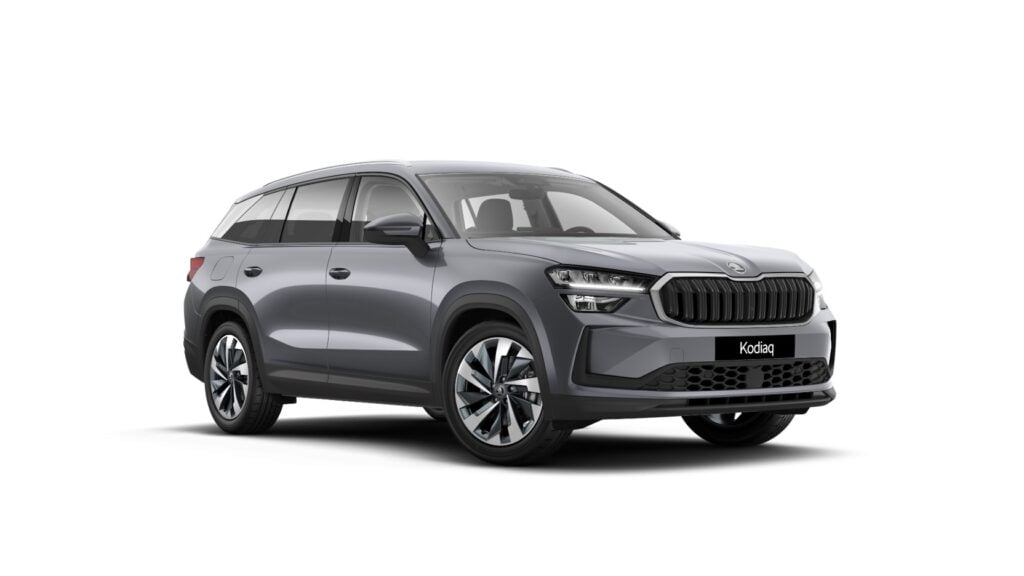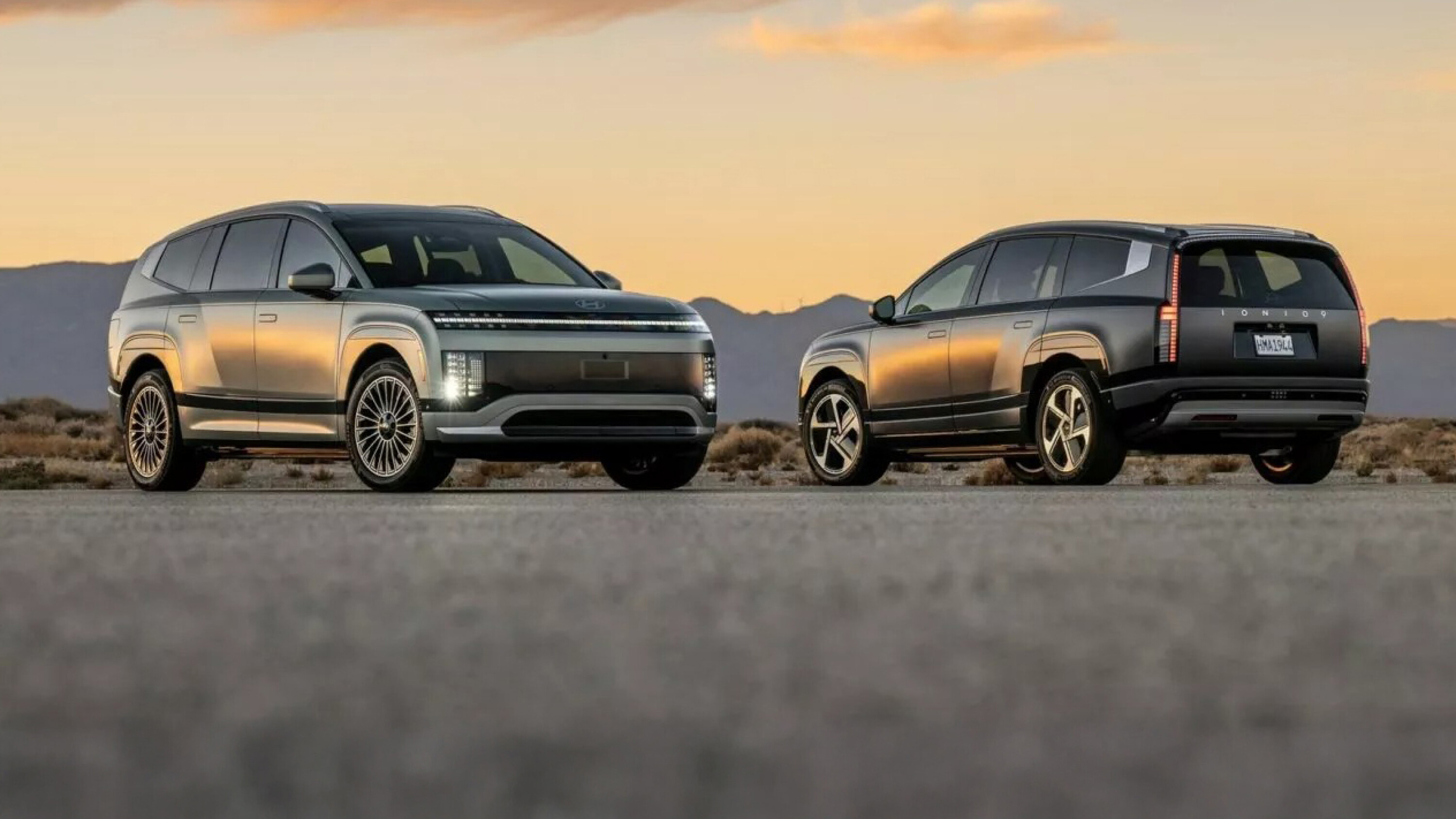
Hyundai is building on its determined progress toward an all-electric range of 23 models by 2030 with the PR debut in Los Angeles of its new its new three-row SUV, the IONIQ 9.
At an event at mid-century masterpiece Goldstein House in LA, Hyundai revealed the IONIQ9 with its impressive internal space for up to seven occupants, ‘aerosthetic’ exterior styling, latest in-car tech and high-capacity 110.3 kWh battery.
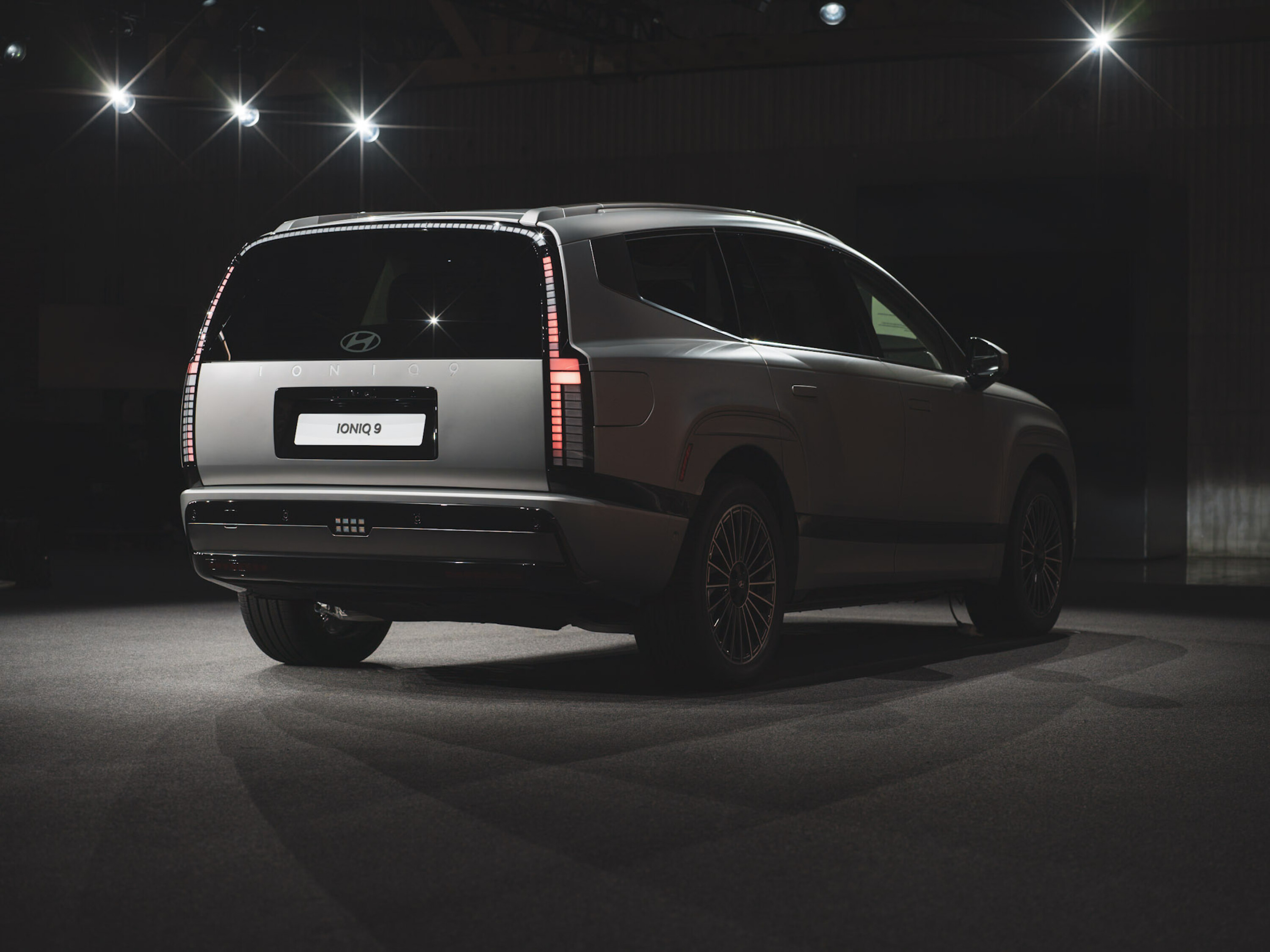
Room for all
Space is the priority in the new IONIQ 9, the cabin offering 1899mm of headroom and 2050mm of legroom when second and third rows are combined.
The interior design utilises elliptical elements to create a relaxing, lounge-like atmosphere. The ‘Relaxation Seats’ in the first and second rows can fully recline with a leg rest for four people to take a nap during re-charging, should they be so disposed.
These seats also incorporate Hyundai’s Dynamic Body Care system with a massage function using pressure and vibration to stimulate occupants’ blood flow and circulation. Meanwhile, ‘Swiveling Seats’ in the second row allow the second- and third-row occupants to face each other once the vehicle has stopped.
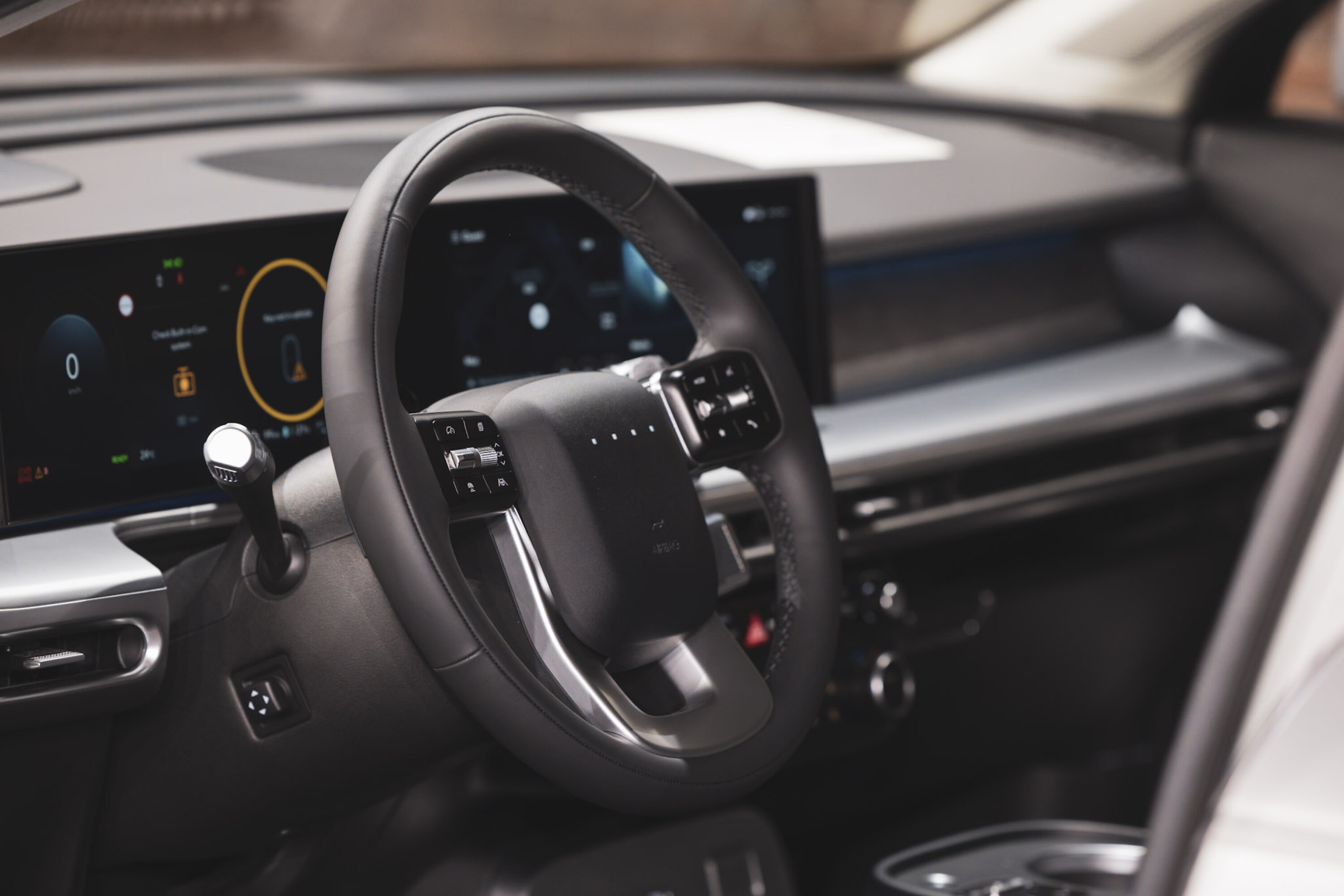
A slidable Universal Island 2.0 storage console can be moved by up to 190 mm for easy access by the front and second rows. The console provides 5.6 litres of storage in the upper tray, as well as 12.6 litres of storage in the lower sliding tray.
IONIQ 9’s infotainment system includes a 12-inch cluster and a 12-inch integrated monitor as part of the panoramic curved display. The standard in-car audio setup features an eight-speaker sound system, with the option of a premium BOSE 14-speaker stereo, which supports 5.1-channel surround sound, wireless updates and advanced BOSE features.
Luggage for up to seven people is, of course, a key consideration. With the third-row seats folded flat, the trunk provides up to 1323 litres of luggage space, or 620 litres with all three rows in place. A front trunk offers a maximum volume of 88 litres for RWD models and 52 litres for AWD models.

‘Aerosthetic’ exterior styling
Hyundai describes the SUV’s exterior look as ‘aerosthetic’ – a smooth, curved roofline creating a streamlined aerodynamic profile and a low drag coefficient of just 0.259 Cd when fitted with digital side mirrors (or 0.269 Cd with conventional side mirrors). The streamlined roofline and rising lower line give the IONIQ 9’s silhouette a sleek, dynamic look.
The SUV’s front-end design uses ‘Parametric Pixels’ integrated into the LED light units and lower fascia to create a unique look.
Aerodynamics are a key focus with energy usage efficiency enhanced by smoothing and balancing airflow under the body, a 3D-shaped underbody cover, aerodynamic wheels and hidden antennas.
Wheel options include standard-fit 19-inch items, 20-inch and 21-inch wheel options, and a top-of-the-line 21-inch Calligraphy design.

Power and range
The IONIQ 9’s high-voltage, floor-mounted NCM lithium-ion 110.3 kWh battery is expected to achieve an outstanding WLTP-estimated all-electric range of 620 km and WLTP-targeted energy consumption of 194 Wh/km for the Long-Range RWD model with 19-inch wheels.
IONIQ 9’s charging time from 10 to 80 percent in 24 minutes using a 350 kW charger, while the platform’s vehicle-to-load (V2L) signature convenience feature and 400V/800V multi- charging capability lower the barriers to EV adoption.
The Long-Range RWD model is powered by a 160 kW rear motor, the Long-Range AWD alternative features an additional 70 kW front motor, while the Performance AWD models include 160 kW motors at both the front and rear.
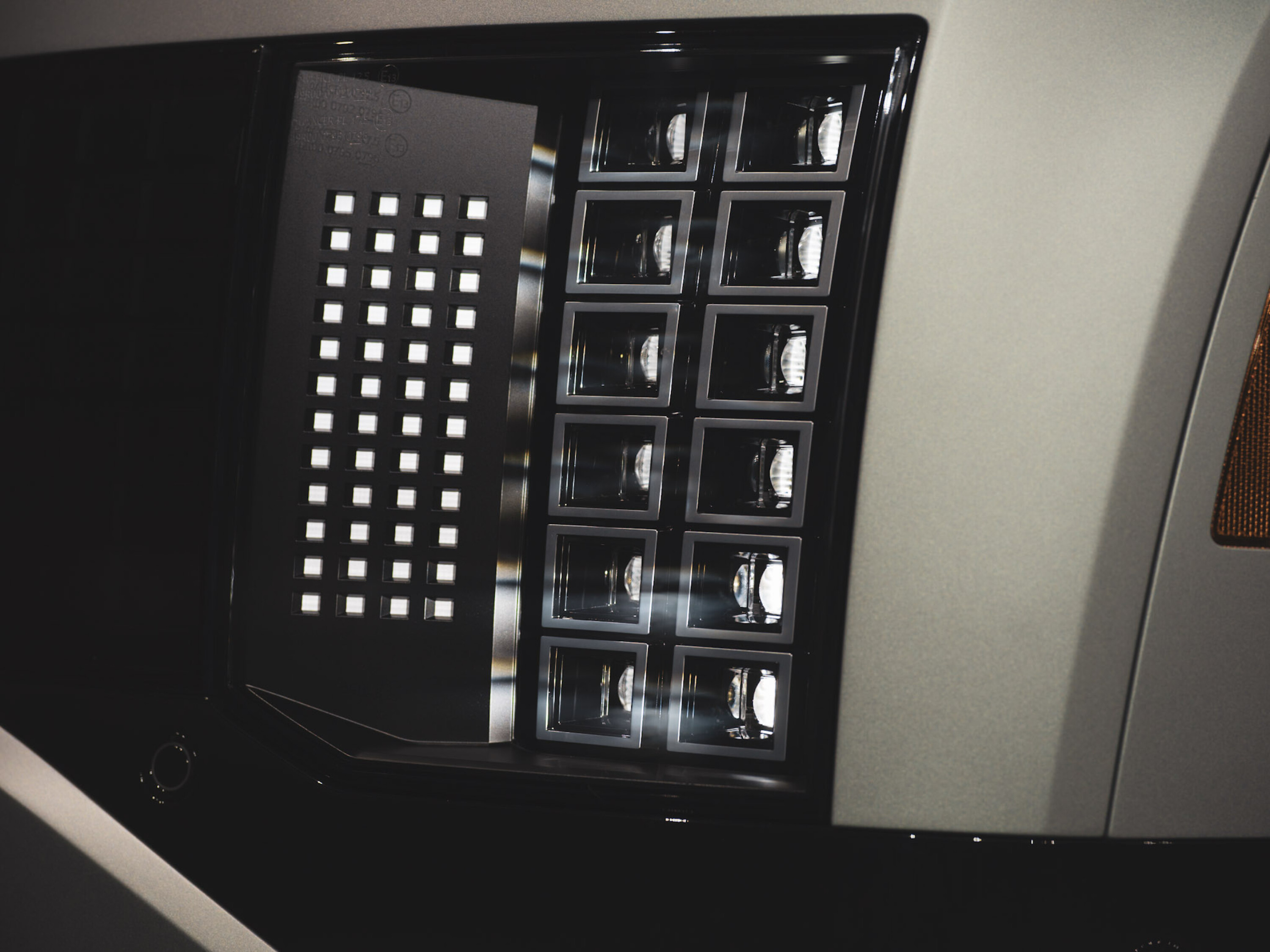
The Performance model 19 can accelerate from 0 to 100 km/h in just 5.2 seconds, while the Long- Range AWD variant 20 takes 6.7 seconds, and the Long-Range RWD version 21 takes 9.4 seconds.
Hyundai says it has addressed common EV customer concerns with technology-related improvements such as a refined EV Route Planner, enhanced torque control display, a comprehensive energy report feature and other smart improvements.
The model features Hyundai AI Assistant, an AI-enabled voice recognition system similar to a home virtual assistant and activated by a button, to enhance the EV experience.
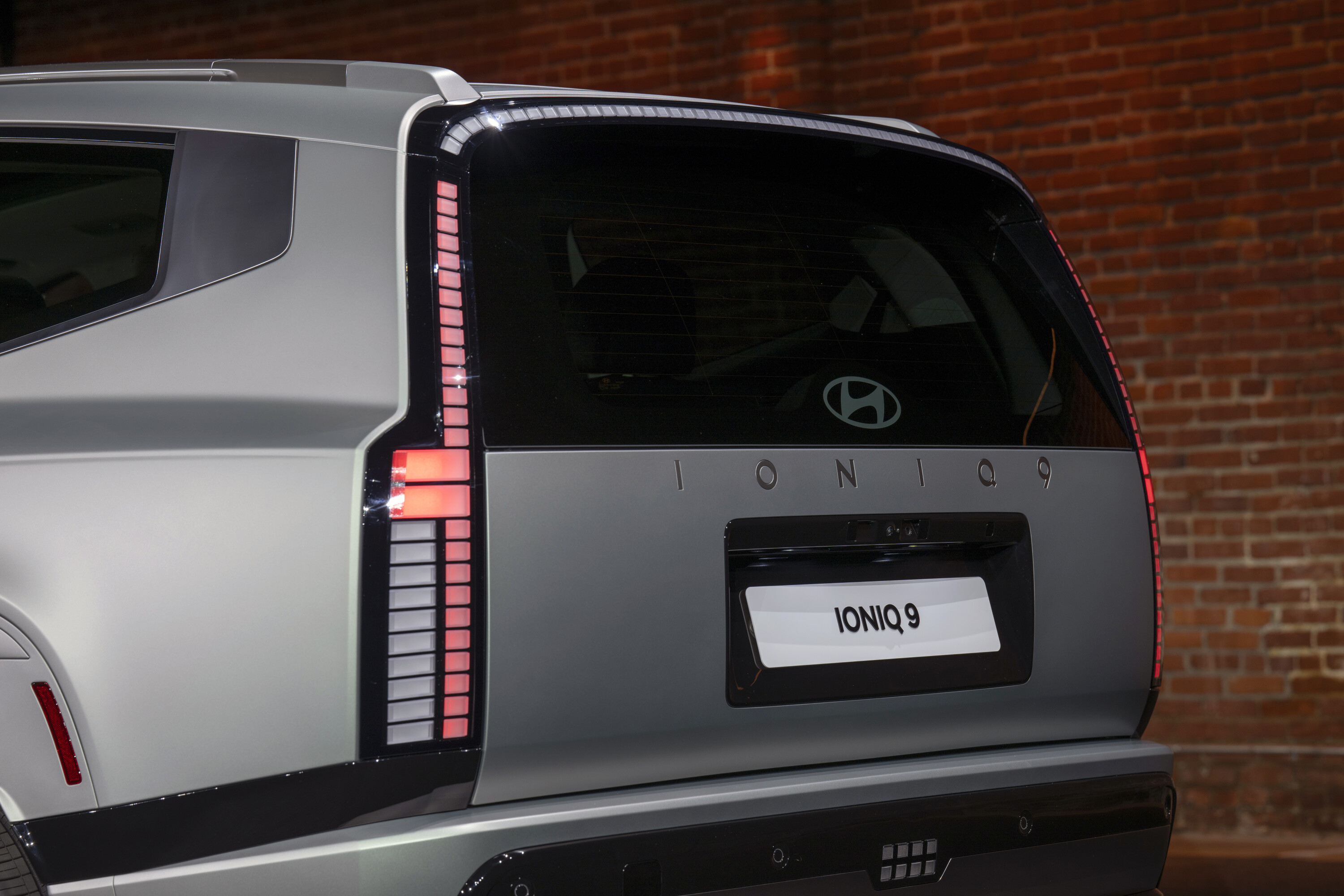
Safety features and drive assistance
IONIQ 9’s reinforced body structure is designed to prioritise battery safety by distributing collision energy and maintaining the SUV’s structural integrity.
Third-row seat belt pre-tensioners and load limiters improves the safety of passengers by preventing head impacts with the second-row seats and reducing head and neck injuries. IONIQ 9 is equipped with 10 airbags.
Hyundai’s latest Advanced Driver Assistance Systems (ADAS) are standard including Forward Collision-Avoidance Assist, Lane Keeping Assist, Blind-Spot Collision-Avoidance Assist, Safe Exit Warning, Safe Exit Assist, Rear Occupant Alert, Intelligent Speed Limit Assist, Driver Attention Warning, Blind-Spot View Monitor, High Beam Assist, Rear Cross-Traffic Collision-Avoidance Assist, Parking Distance Warning and more.
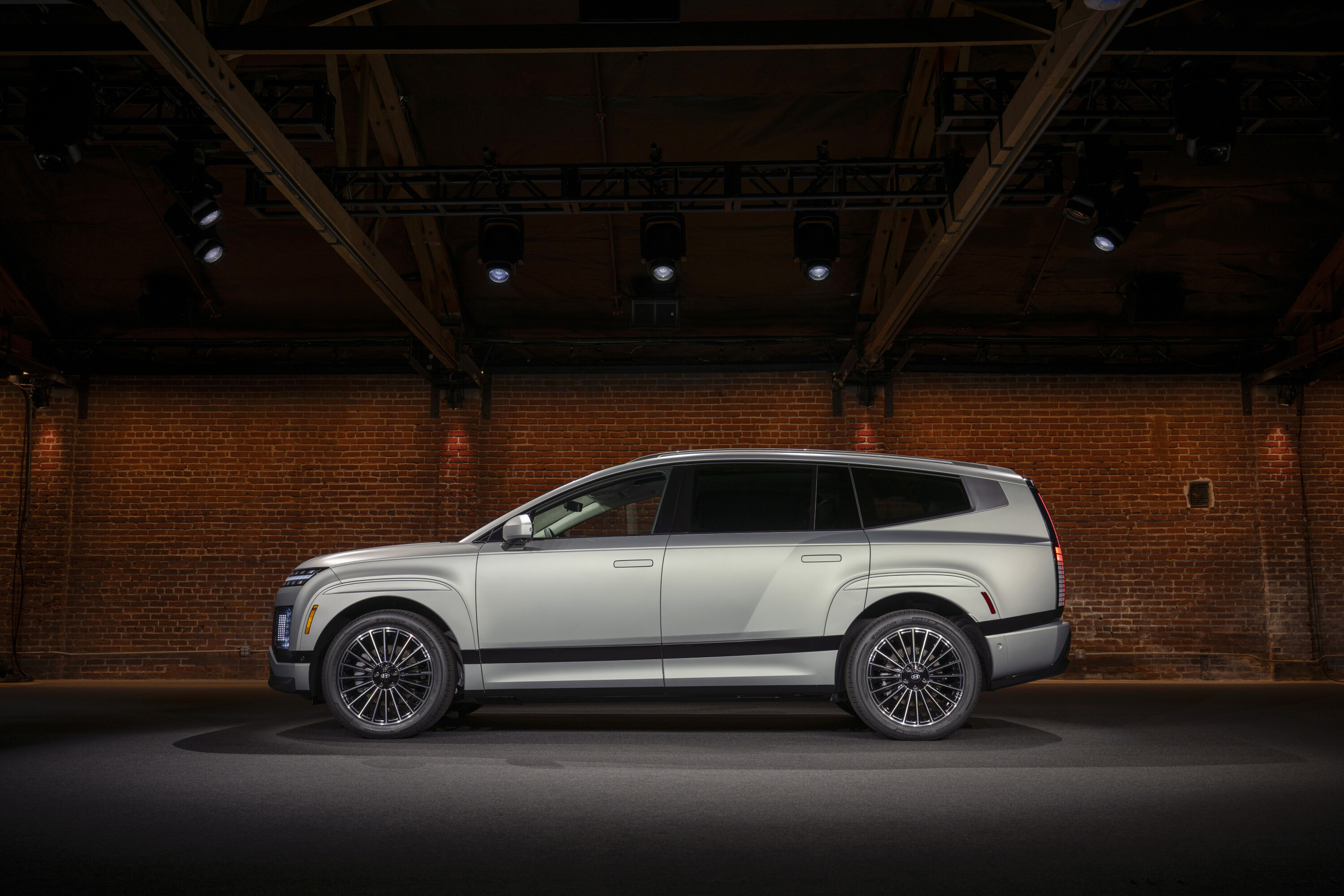
IONIQ 9’s likely roll-out
IONIQ 9 will go on sale in Korea and the United States in the first half of 2025, with subsequent rollout planned for Europe and other markets later.
IONIQ 9 will also offer enhanced convenience and design features as optional upgrades, with detailed specifications will be unveiled closer to specific market launches.
We recommend
-
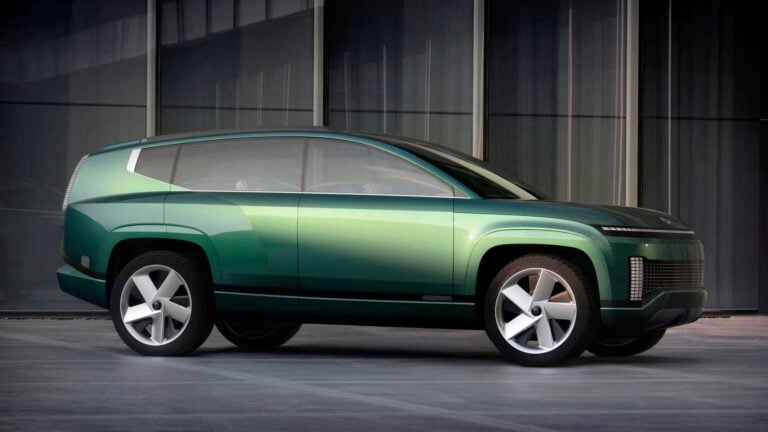 News
News2023 Hyundai Ioniq 9: Electric SUV previewed as concept
Hyundai’s electric SUV has made its debut as a concept
-
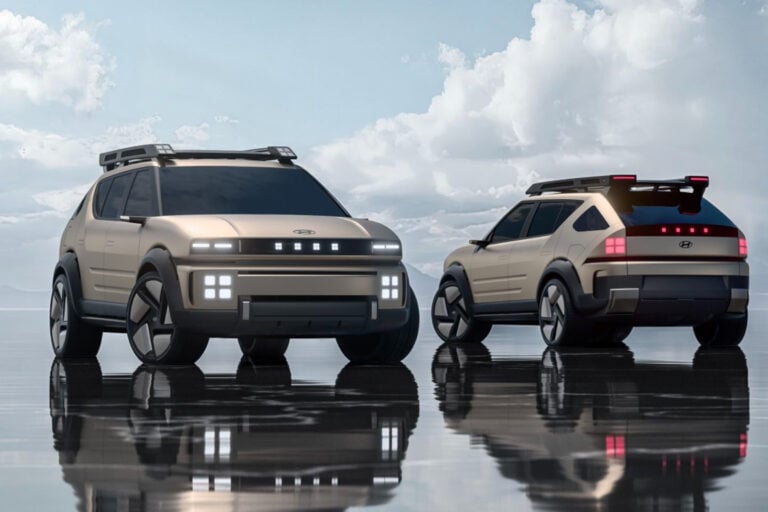 News
NewsNew Hyundai Models Coming: IONIQ 9, EV ute, Vision 74, Inster & more!
Your quick guide to all the future models coming from Korean brand Hyundai – including its first ever ute – from 2025 and beyond


